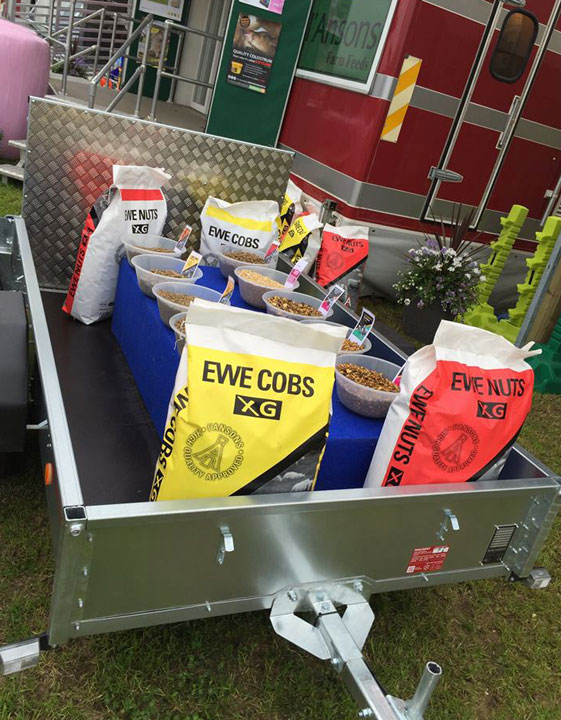One of the most important details with animal feed is storage. All kinds, including compound feeds, need special care to store them effectively. This will halt quality degradation and loss. What’s more, these are valuable commodities; you need to store them carefully to stop theft. Additionally, good stock control is vital if you want to improve the wellbeing of animals. This works to ensure you have enough, but not excessive amounts that could spoil.
A crucial thing to keep in mind is feed spoils in storage. Whether it degrades slowly or rapidly partly depends on its quality when you get it. However, the main factor is how you store it. In this post, we’re going to discuss what can happen to feeds if you mishandle storage.
Losses and deteriorative changes
Firstly, environmental factors like oxygen, light, temperature, and moisture cause deteriorative changes and losses in feeds. They’ll affect them directly or will influence the rate at which fungi and insects develop. The latter both consume feed in storage. In addition, the wrong conditions cause changes in feed quality due to enzymatic actions and development of oxidative rancidity.
Physical loss
One of the biggest issues that can occur with feed storage is physical loss. Massive loss can happen as an accumulative effect of separate small, but frequent theft. Less clear are the losses coming from scavenging animals. Mice and rats are particularly problematic.
Fires present a real risk of physical losses. Temperature increases high enough to cause a fire can happen in stacked animal feed. Feed stores are flammable, especially if they’re always full of atmospheric dust. This can happen inside the store or within adjacent areas.
Water and heat damage
Another thing to remember is high relative humidity and moisture will lead to losses. They make it tricky to use the feeds in their original form. If it’s an ingredient, it could be too wet to mix. It is worse for pellets; the conditions can make them crumble.
There is also trouble because humidity and moisture encourages fungi growth and insect infestation. It can make fungi grow faster and cause more damage. Similarly, it can create the perfect breeding ground for insects.
It doesn’t matter what the initial moisture content is of the feed; it is going to gradually reach equilibrium. It’s one that relies on the relative humidity of the air present in the store. Make sure you keep an eye out and have proper ventilation.
Insect damage
Animal feed will always attract insects. Included here are many species of beetles, weevils, and moths. They consume the feed and grow well at standard temperatures inside feed stores. At temperatures ranging from 26-37ºC, they can get to epidemic proportions.
Insects can cause many issues. You’ll lose the feed they consume. In addition, they can expose feeds to additional damage by fungi. They cause problems through oxidation and by introducing contaminating bacteria too. If you give products infested with insects to animals, it can cause various health problems.
Fungal damage
Fungi tend to grow at relative humidities over 65%, moisture contents above 15%, and temperatures specific to the species. However, if it gets warmer and more humid, it can lead to an increase in growth. Lots of fungi get killed when you process ingredients. Yet, their spores are resistant. So, they will remain and be able to re-infect the material in the future. This is if environmental conditions favour their development.
Fungal growth results in weight loss, increases in moisture and temperature, discolouration, and staleness. Maybe worst of all, certain common species generate mycotoxins. They can cause serious health problems for animals. Moreover, as the toxins stay in the flesh of the creature that eats them, they become a hazard to humans too. Ingredients particularly prone to contamination via mycotoxins include sunflower, cassava, cottonseed, groundnut, maize, and sorghum.
Chemical changes
Finally, we’ll go over the chemical changes that can happen in storage. Here, lipids can break down into free fatty acids. It can make the animal feed rancid. For example, carbohydrates could ferment to become alcohols and violate fatty acids.
The key thing to remember is rancidity will lower the palatability of a feed. It can also produce toxic chemicals capable of depressing growth. What’s more, chemicals can be produced that lower the availability of amino acids in feed proteins.
Vitamin potency also decreases in storage. This is especially true in premixes that hold minerals too. Naturally occurring vitamins within feed-stuffs degrade in storage too.
We have a great selection of animal feed
At JS Hubbuck Ltd, we have multiple feed options to offer you. They’re high in quality and reliable. As a result, you’ll feel safe using them to sustain your animals.
So, if there’s anything you need from us, please get in touch. We can even offer advice if you are unsure what type of animal feed to choose. We’ll give you information to help you decide.

